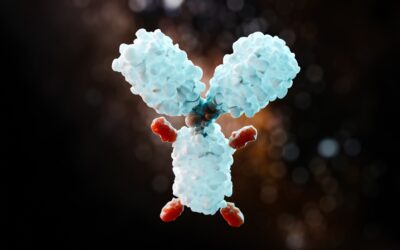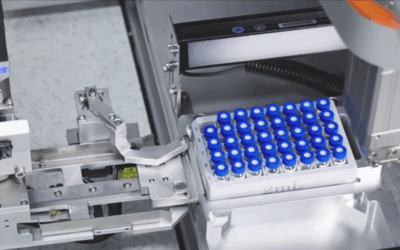The term “biomarker” first appeared in a 1947 paper on fetuin-A detection. Biomarkers are defined characteristics measured as indicators of normal biological processes, pathological processes, or biological responses to exposure or drug intervention, including therapeutic interventions. They serve as early warning indicators of organism damage, reflecting changes in cellular molecule structure and function, biochemical metabolic processes, physiological activities, and changes in individuals, populations, or ecosystems. Biomarkers can include small molecules, proteins, cells, histologic, radiographic, or physiologic characteristics, such as blood pressure changes, blood lactate levels post-exercise, and blood glucose levels in diabetic patients. Specific changes at the molecular level in DNA, RNA, metabolites, or protein content can also be biomarkers.
Categories of Biomarkers
According to the BEST (Biomarkers, Endpoints, and other Tools) guidelines released in 2016 by the U.S. National Institutes of Health (NIH), biomarkers fall into several categories: safety biomarkers, diagnostic biomarkers, susceptibility/risk biomarkers, prognostic biomarkers, response biomarkers, predictive biomarkers, and monitoring biomarkers. For instance, serum creatinine can be used as a safety biomarker for nephrotoxicity monitoring, while blood sugar or HbA1c can be diagnostic biomarkers for Type 2 diabetes.
The Role of Biomarkers in Drug Development
Biomarkers play crucial roles throughout the drug development process, from discovery to commercialization. During drug discovery, they assist in target selection and elucidating mechanisms of action. In preclinical stages, biomarkers are used for dose selection, safety assessments, and further understanding of drug mechanisms. Clinically, they aid in diagnosis, patient stratification, selection, dose optimization, pharmacokinetics, safety, and efficacy assessments. In the commercialization phase, biomarkers are used in companion diagnostic kits, clinical safety monitoring, efficacy monitoring, and drug quality control.
In 2004, U.S. regulatory authorities highlighted biomarkers as key to enhancing drug development efficiency in the white paper “Innovation or Stagnation: Challenge and Opportunity on the Critical Path of New Medical Products.” Biomarkers improve decision-making in drug development, influencing drug dosing, treatment duration, experimental design, risk/benefit ratios, clinical translation, and precise patient selection. The Biotechnology Innovation Organization (BIO) reported that new drugs developed with biomarker guidance have triple the success rate compared to those developed without biomarkers.
A review by Nature summarized clinical trial failures as often due to incorrect targets, molecules, results, and patient selection, issues that biomarker-guided trials can mitigate. For example, predictive biomarkers for patient stratification help identify patients likely to respond well to drugs while excluding those sensitive to side effects.
Detection Technology for Protein Biomarkers
Protein biomarkers are pivotal in diagnosing diseases and monitoring treatment efficacy. Accurate and sensitive detection methods are essential in this domain. Below, we explore several prominent technologies, each offering unique advantages and limitations.
1. Enzyme-Linked Immunosorbent Assay (ELISA). ELISA is a widely used technique for detecting and quantifying proteins in clinical samples. This method relies on antibodies to bind the target protein, producing a measurable signal, typically colorimetric, fluorescent, or luminescent.
Advantages:
- High specificity and sensitivity
- Relatively simple and cost-effective
- Well-established use in laboratories
Limitations:
- Sensitivity is limited compared to newer technologies
- Narrow linear range
- Time-consuming preparation
- Potential for cross-reactivity
2. Electrochemiluminescence (ECL). Platforms like the Meso Scale Discovery (MSD) combine electrochemical and luminescent detection methods.
Advantages:
- Multiplexing capabilities for simultaneous detection of multiple biomarkers
- Broad dynamic range and high sensitivity
- Low background signal enhances accuracy
Limitations:
- Requires specialized equipment
- More costly than traditional ELISA
3. Luminex Multiplex Assay. This technology employs color-coded beads coated with specific antibodies to detect multiple biomarkers simultaneously in a single sample.
Advantages:
- Ability to analyze up to 100 biomarkers in a single assay
- Reduced sample volume and time for analysis
- Provides quantitative and qualitative data.
Limitations:
- Requires specialized equipment and software
- Potential for bead cross-reactivity
- Complex data analysis
4. Single Molecule Arrays (Simoa). Technologies like the Quanterix platform enhance sensitivity by detecting individual protein molecules using digital ELISA principles.
Advantages:
- Ultra-high sensitivity (up to 1000 times greater than traditional ELISA)
- Ability to detect low-abundance proteins
- Suitable for early disease detection and monitoring
Limitations:
- Expensive and requires specialized equipment
- Complex assay setup and data interpretation.
5. Automated Microfluidic Immunoassay Systems (Ella). This technology integrates microfluidics with immunoassay techniques for rapid and automated protein detection.
Advantages:
- Fully automated, reducing human error and hands-on time
- High sensitivity and broad dynamic range
- Short turnaround time with results in approximately 1.5 hours
Limitations:
- Requires specialized equipment
- More expensive than traditional methods.
6. Other Immunoassay Platforms. Additional platforms contribute to the detection of protein biomarkers, each offering unique features:
- Singulex: Ultra-sensitive detection, particularly in low-abundance proteins.
- Gyros: Uses microfluidic technology for high-throughput and precise assays.
- ELISpot: Measures the frequency of cytokine-secreting cells, useful in immunological studies.
- Randox: Provides comprehensive multiplex assays for simultaneous detection of multiple biomarkers.
Selecting the appropriate detection technology for protein biomarkers hinges on various factors, including required sensitivity, specificity, throughput, and available resources. Each technology has its strengths and limitations, making it essential to choose the method that best fits the specific needs of the research or clinical application.
Development and Validation of “Fit-for-Purpose” Methodology
Biomarkers serve various purposes in drug development, from exploratory hypothesis generation and internal decision-making to critical clinical decisions. U.S. regulatory authorities suggest a “fit-for-purpose” approach to biomarker method validation. Full validation is required for regulatory submissions affecting safety or efficacy, while less stringent validation may suffice for early-stage drug development.
Challenges in Bioanalysis of Protein Biomarkers
Using commercial kits or self-developed methods for protein biomarkers presents challenges. Commercial kits, though convenient, may lack cost-effectiveness and specificity for clinical applications, necessitating further method development and validation. Key challenges include:
- Standard-Surrogate Biomarkers. Selecting appropriate standards is difficult due to differences between endogenous analytes and exogenous standards, necessitating careful evaluation and parallelism testing.
- Surrogate Blank Matrix. Preparing standards in surrogate blank matrices requires ensuring similarity to endogenous matrices, often involving complex and costly procedures.
- Quality Controls (QCs). QC samples need to mimic real samples, preferably using endogenous matrices. However, ensuring QC samples mimic real samples is challenging; often, scientists can prepare QC in assay buffers with extensive validation.
- Parallelism. Evaluating parallelism with endogenous analytes is crucial for method validation. It often involves serial dilutions and comparing the precision between samples in a dilution series within the assay range.
- Selectivity. Ensuring selectivity involves testing recovery rates using the subtraction method, with recommended spiking of exogenous standards at significant concentrations.
- Stability. Assessing stability is complex due to differences in endogenous and exogenous analytes, with variations in folding and post-translational modifications affecting results.
- Multiple Detection. Advanced technologies enable multiplex testing, which requires careful method development and validation to address challenges like cross-reactivity, crosstalk, and batch differences.
A Final Word
By addressing these challenges, the pharmaceutical industry can enhance the reliability and efficacy of biomarker-based bioanalysis, contributing to more successful drug development and personalized treatment strategies.
As a global company with operations across Asia, Europe, and North America, WuXi AppTec provides a broad portfolio of R&D and manufacturing services that enable the global pharmaceutical and life sciences industry to advance discoveries and deliver groundbreaking treatments to patients. Through its unique business models, WuXi AppTec’s integrated, end-to-end services include chemistry drug CRDMO (Contract Research, Development and Manufacturing Organization), biology discovery, preclinical testing and clinical research services, helping customers improve the productivity of advancing healthcare products through cost-effective and efficient solutions. WuXi AppTec received an AA ESG rating from MSCI for the fourth consecutive year in 2024 and its open-access platform is enabling around 6,000 customers from over 30 countries to improve the health of those in need – and to realize the vision that “every drug can be made and every disease can be treated.”


